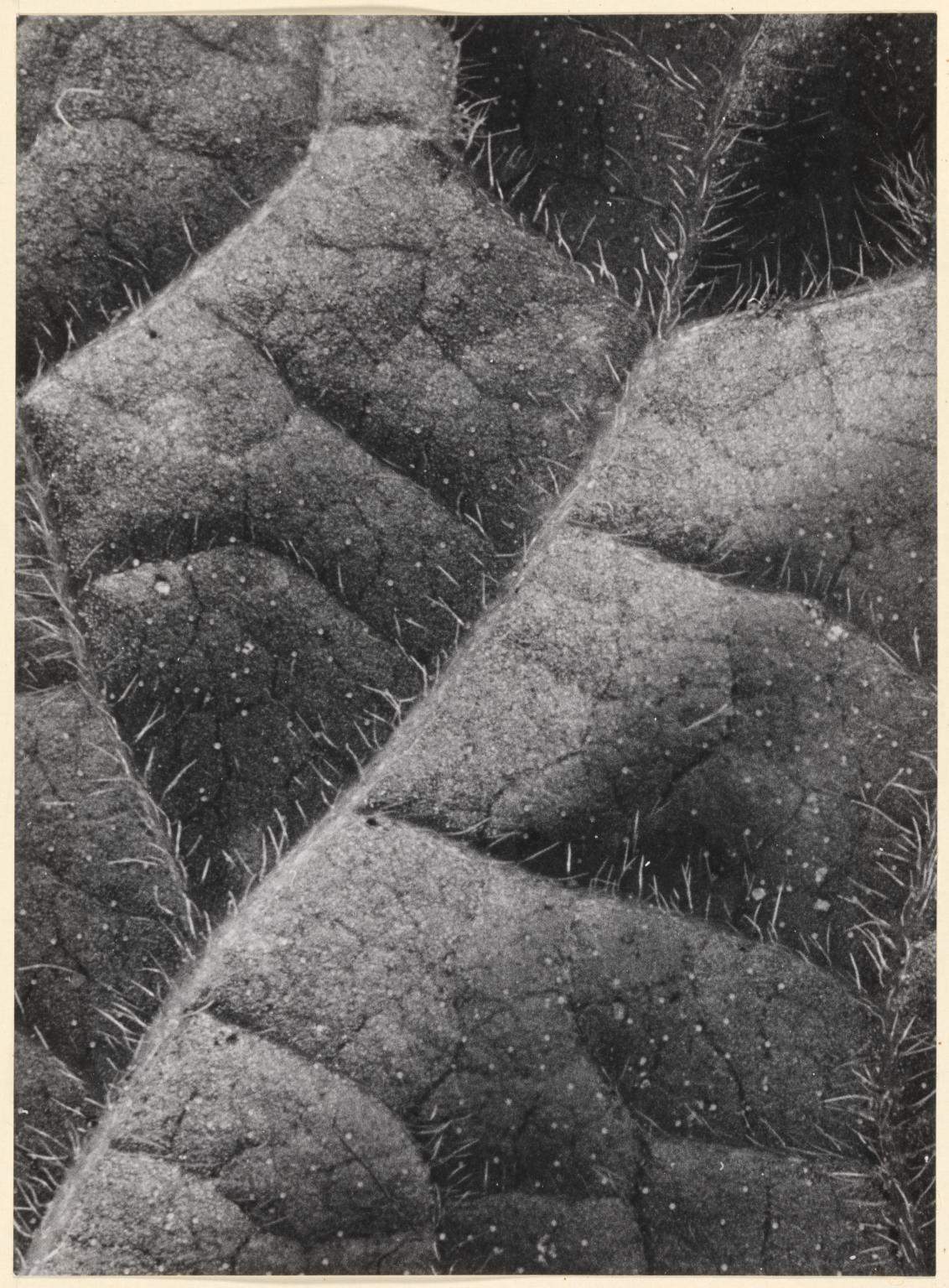SUMMARY
Underside of a Leaf 1933–6 is one of four black and white photographs in Tate’s collection taken by the Swiss photographer Werner Bischof (Tate P81105–8). As the title indicates, it is a close-up photograph of the underside of a leaf. The image is cropped so that no edges of the leaf are visible, a compositional device which distorts the apparent scale of the leaf, making it appear larger than expected and unfamiliar. The macro lens used for the photograph allowed Bischof to capture intricate detail at a very small focal distance, enhancing the texture of the leaf’s undulating surface and highlighting its hairs and veins.
The four photographs were taken between 1933 and 1936 when Bischof was either still a student at the Zürich School of Arts and Crafts or in the early period of his studio practice, and so pre-date his more well-known documentary work. They depict everyday objects with the aim of exploring their formal qualities and structures. The variety of objects and approaches references Bischof’s desire at the time to experiment with and master different photographic and darkroom techniques, often with an eye on commercial work and advertising (see Untitled 1934, Tate P81108). Underside of a Leaf 1933–6 (Tate P81105) is one of many images of botanical and natural forms Bischof photographed as part of this exploration, and demonstrates his ability to use directional studio lighting to attain various levels of sharpness, detail and tonal gradation. The play of reflected light and shadow in Untitled 1934 (Tate P81107) evidences Bischof’s experimentation with formal composition, while the graphic style of Crate with Cardboard 1933 (Tate P81106) resembles the layering effects seen in collage and photomontage popular during this period. While working in his studio on advertising, commercial and fashion projects, the exploratory photographs Bischof produced during this period aligns him with other pre-Second World War modernist photographers such as Werner Mantz (see Portfolio 1927–35, Tate P79940–9), Aenne Biermann (see Ceramic Cup c.1929, Tate P80261), and Iwao Yamawaki (see Untitled (Composition with Bricks, Bauhaus) 1930–2, Tate P79898).
Werner Bischof began studying photography in the early 1930s, going on to build up a successful studio and publish work for various magazines including Du in Zurich. His practice can be divided into two distinct chapters – his time as a student and studio photographer in the 1930s; and his post-war years as a prolific documentary photographer, travelling extensively in Europe, India, Japan and Latin America. Bischof was the fifth member of the cooperative picture agency Magnum Photos, joining in 1949.
Further reading
Claude Cookman, Werner Bischof, London 2001.
Marco Bischof, Questions to My Father, London 2004.
Shoair Mavlian
July 2013
Arthur Goodwin
March 2019
